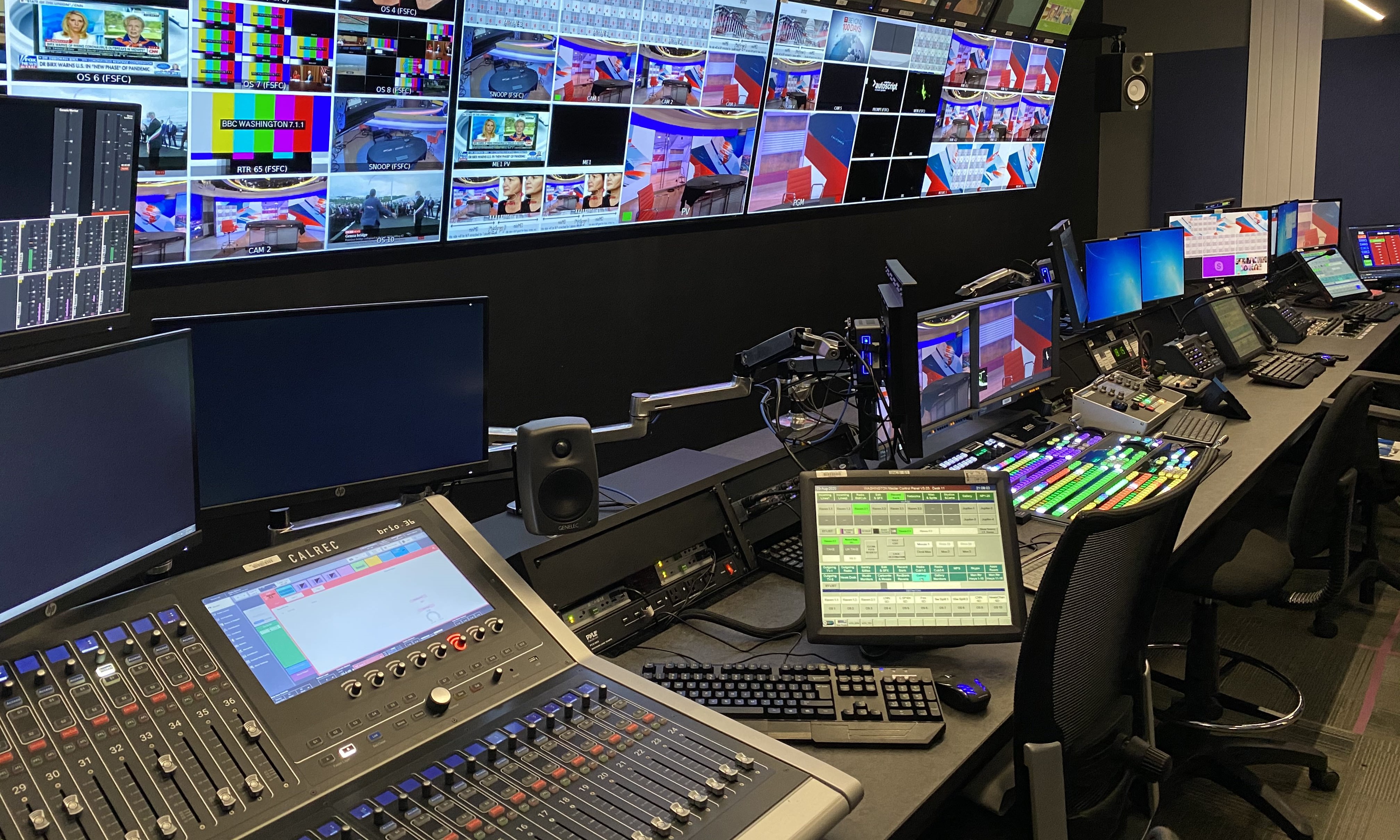DVG Installs a Calrec Brio36 at the BBC’s Washington Bureau
Calrec audio console serving as bureau’s main mixer for all local productions

WASHINGTON—Earlier this year, DVG installed a Calrec Brio36 digital audio console at the BBC’s Washington bureau in Washington, D.C. Serving as the main mixer for all of its D.C.-based productions, the console is part of key upgrades for the broadcaster’s “Gallery” production control room. It primarily works on nightly news productions and also covers special events such as elections or conventions.
This is the first time the BBC Washington bureau is using a Calrec console, suggested by DVG because of the Brio36’s easy-to-use routing system, great EQs and dynamics, numerous aux buses and mix minus legs, plus plenty of power. One particular feature used on several channels is the ability to have a second input routed and waiting on standby that’s accessed by the press of a button. From having backup wired mics for the wireless signals, or for having a backup telephone hybrid ready to cover the main hybrid used for directors in London to communicate with the talent, this feature really stood out as crucial for redundancy and reliability on air.
The Brio setup also lets the BBC see the GUI on an external monitor. DVG took the DVI output of the Brio36 and put it into a KVM matrix, which means multiple end-users can train at the same time, with proper social distancing, which is mandatory during COVID times. Everyone has the same view of the GUI right in front of them on a local monitor, which is especially useful if you are in another room trying to troubleshoot something and can’t be in front of the Brio at the same time.
The setup also involves a Dante card installed in the Brio, which ties in their other IP systems. Through the Dante card, the BBC can feed their intercom system and remotes all the mix minus feeds they need without tying up physical audio output ports. They also interface with their existing audio router through an external MADI/Dante bridge adaptor.
Although automation isn’t currently being used, they’re talking about adding it in the future and this feature will be incredibly useful for redundancy and ease of programming.
Joe Davenport is vice president of Engineering at Digital Video Group.
The professional video industry's #1 source for news, trends and product and tech information. Sign up below.
